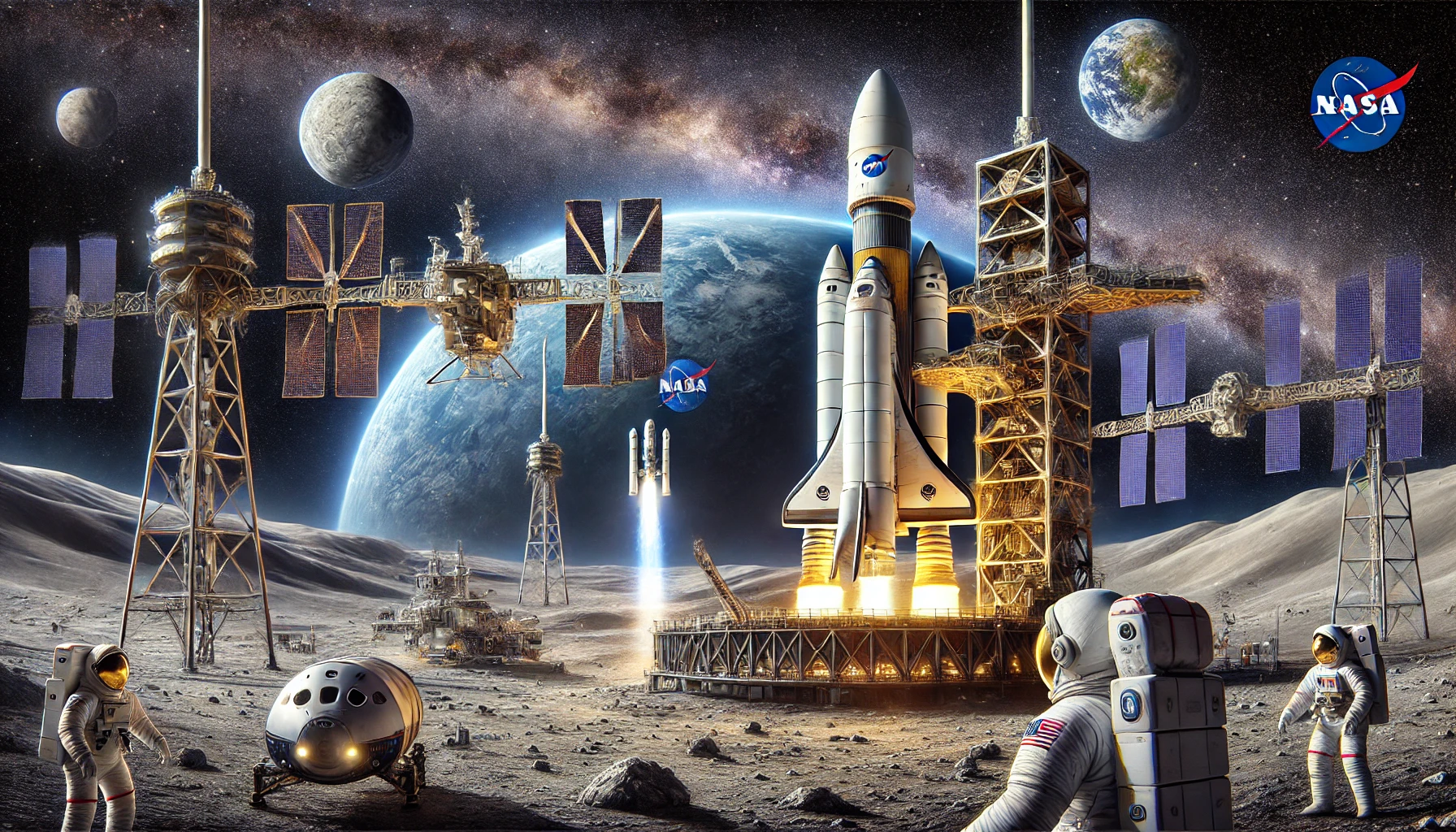NASA's Artemis Program: The Next Giant Leap for Mankind?

NASA’s Bold Plan: Back to the Moon (and Beyond)
It’s been over 50 years since humanity last left footprints on the Moon, and NASA is gearing up for its grand return with the Artemis program. But this isn’t just another lunar visit for the sake of nostalgia. NASA’s Artemis program is a bold, ambitious plan to establish a long-term presence on the Moon and eventually use it as a stepping stone to Mars. The excitement? Absolutely through the roof! But, before we get too carried away with dreams of moon colonies and space farms, let’s take a closer look at the mission’s roadmap and the technology powering it.
Meet the Space Launch System (SLS): The Behemoth of Rockets
NASA’s Artemis mission is powered by the biggest, baddest rocket of them all: the Space Launch System, or SLS. This colossal rocket is designed to carry both crew and cargo farther than any other vehicle ever built. With a height rivaling the Statue of Liberty and enough thrust to lift a small city (okay, not literally), the SLS is NASA’s crown jewel. However, getting the SLS off the ground has not been easy. Delays, budget overruns, and a few technical hiccups have plagued its development, leaving some wondering if it will ever fly. Spoiler alert: It will. And when it does, it’s going to be epic.
The Orion Spacecraft: Taking Astronauts on a Deep Space Cruise
Of course, a massive rocket isn’t enough. NASA needs a spaceship to carry astronauts safely to the Moon and back, and that’s where Orion comes in. Think of the Orion spacecraft as NASA’s futuristic deep-space RV. Equipped with life support systems, advanced navigation, and enough room to make sure astronauts don’t go stir-crazy, Orion is the spacecraft that will take humanity farther than we’ve gone in decades. Like the SLS, Orion has faced its share of challenges, but with each test flight, it’s proving to be a reliable ride. Whether it’s zipping around the Moon or preparing for an eventual Mars trip, Orion is at the heart of NASA’s deep space ambitions.
The Gateway: NASA’s Lunar Outpost in Space
The Gateway is another crucial piece of the Artemis puzzle. Picture this: a space station orbiting the Moon, acting as a pit stop for astronauts traveling between Earth and the lunar surface. Sounds like something out of a sci-fi movie, right? Well, NASA is making it happen. The Gateway will serve as a staging area for lunar landers, a hub for science experiments, and a place to prepare for Mars exploration. One of its biggest perks? It will be much more sustainable than the Apollo missions, allowing for longer stays and more exploration opportunities. Plus, international partners like the European Space Agency are jumping on board to help build this cosmic rest stop.
Challenges Along the Way
No mission of this scale is without its challenges. From the technical complexity of building a lunar outpost to the sheer cost of getting these massive systems off the ground, NASA’s Artemis program has its hands full. There are questions about long-term funding, potential delays, and the always unpredictable nature of space travel. Yet, despite the hurdles, NASA remains committed. The future of Artemis could revolutionize not just lunar exploration but the way we think about living and working in space.
Mars: The Ultimate Prize
Let’s not forget, the Moon is just the beginning. Artemis is a stepping stone to the ultimate goal: Mars. The technology being developed for Artemis, from the SLS rocket to the Gateway station, will be crucial in paving the way for human missions to the Red Planet. NASA’s vision is to use the Moon as a testing ground for technologies that will one day help us survive and thrive on Mars. The idea of humans living on another planet might sound like a pipe dream, but with Artemis leading the charge, it’s not as far off as it once seemed.
What’s Next for Artemis?
So, what’s next for the Artemis program? The timeline is ambitious. Artemis I, the uncrewed test flight, is set to launch soon, followed by Artemis II, which will take astronauts around the Moon. By the time Artemis III rolls around, we’ll be landing astronauts on the lunar surface for the first time since 1972. After that, the focus will shift toward establishing a sustainable presence on the Moon and eventually sending humans to Mars. Excited yet?
Are You Ready for the Next Giant Leap?
The Artemis program is more than just a mission to the Moon; it’s the start of a new era in space exploration. With cutting-edge technology, international partnerships, and an eye on Mars, NASA’s ambitious plan is set to take humanity farther than we’ve ever gone before. The only question is: Are you ready for the next giant leap?



